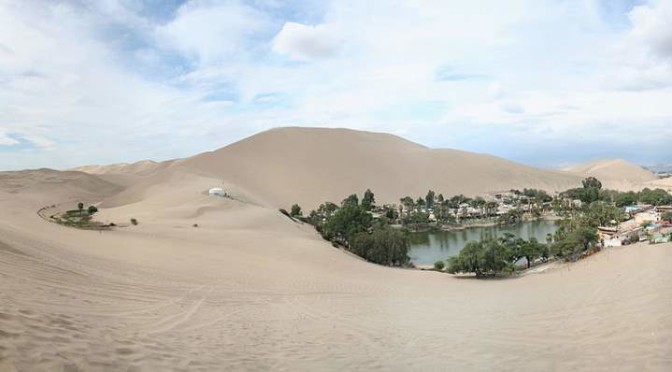Climate changes are making pre-existing water shortages in dry climates even more severe. Drought conditions make life challenging for all beings, but as humans, we can take action to ensure the homes and buildings we construct are designed to conserve water for all plants, animals, and people that need it.
Of course, massive action is best for our planet. Though personal efforts may make a difference over time, large-scale changes are necessary to preserve the global water supply. Before we explore the green infrastructure designs for water conservation in arid climates, we must assess the challenges they counter.
Water Conservation Challenges
As greenhouse gas emissions increase and the global temperature rises, Earth experiences adverse effects. One significant impact is the rising evaporation rate. While some regions experience increased rainfall from evaporation-driven water displacement, others face extended droughts.
Drought periods lower aquifer levels and limit regional water supplies. Society’s rising demand for freshwater sources also impacts conservation efforts. Currently, the need for aquifer supplies exceeds their replenishing capabilities.
Where are we seeing this? For one, a combination of high water consumption rates and increased evaporation is significantly affecting the Colorado River Basin in the United States. The river supplies nearly 40 million residents with clean drinking water and lost 65 cubic kilometers between 2004 and 2013. Without adequate resources, various individuals face dehydration and other issues.
Significant water source depletion is a severe environmental challenge. Nearly 884 million people lack access to clean drinking water globally. When we practice effective water conservation techniques, we can decrease the dehydration rate and improve sustainability efforts.

What Is Green Infrastructure?
Environmental engineers and scientists explore the challenges associated with water conservation and seek sustainable solutions. Green infrastructure developed to meet this challenge decreases stormwater runoff and enhances communities’ access to non-exploitative water sources.
Conventionally, construction professionals design buildings with rain gutters filtering into a storm grate. They decrease local vegetation access to resources, creating a demand for additional clean water sources.
Various sustainable building, road, and land designs can increase conservation efforts and reduce environmental degradation. Here are some design tactics that have been proven to work wonders for our water supply.
Rainwater Harvesting Systems
The stormwater collection is an age-old technique that builders strayed away from when conventional water supplies gained popularity. Architects are re-adopting the method and creating rainwater harvesting systems. The green infrastructure feature collects rain and snowmelt in containers for various uses.
Some devices directly transfer the water to irrigation systems, reducing waste. More advanced devices can filter and pump stormwater into a home’s faucets, showerheads, washing machines, and more. Individuals with rainwater harvesting systems can eliminate their reliance on city water supplies.
Green Roofs
Professionals also designed green roofs to enhance water conservation efforts. The building feature collects and stores stormwater for various uses. Green roofs contain vegetation ranging from grass to vegetable-producing plants.
The water enters the vegetation region, supporting the development of plants. Excess water travels beneath the growth medium to a drainage layer, which either transports the stormwater to a container or holds it in a sponge. It rewaters plants through drought periods.
Green roofs also cool off a building, decreasing their air conditioning emissions and making them top urban trends in the construction industry. It’s a win for both the planet and clients -the carbon footprint is reduced and so are facility managers’ energy bills.
Lowering greenhouse gas emissions reduces climate change and lowers the evaporation rate. Preserving Earth’s natural temperature control systems also conserves global water sources.
Swales
Swales are depressions in the Earth’s surface that follow the natural contour. Rather than allowing water to quickly move across the land, carrying contaminants to rivers and oceans, swales slow runoff. They give local vegetation the chance to absorb excess stormwater.
Some farmers use the technique to significantly reduce irrigation-related water exploitation. Agricultural professionals place water-intensive crops at the base of swales, increasing their access to natural resources. Farmers also use the green infrastructure feature in conjunction with other water sources to limit their reliance on conventional supplies.
They can access stormwater when it is available and use canal-transferred irrigation sources during low-precipitation times. Environmental engineers developed innovative methods of conserving conventional water supplies in arid locations with renewable resources.
Solar Canal Covers
Researchers recently developed a solar panel structure covering 4,000 miles of a canal to prevent evaporation-related water loss. The canal provides Southern California’s agricultural industry with the resources to produce optimal crop yields.
The solar canal cover can save 63 billion gallons of water annually for the state. Placing the panel device over major water sources can improve conservation efforts and create emissionless electricity for surrounding communities. The system can reduce water loss and prevent future environmental effects.
Green Infrastructure for Water Conservation
When we adopt water conservation features and transition our resource reliance away from conventional sources, we increase society’s access to clean drinking water. Green infrastructure also reduces utility costs, improving residents’ monthly savings. Additionally, water conservation methods enhance environmental protection and support the global ecosystem.
- 9 Myths and Facts About Environmental Toxins - January 4, 2023
- Top 6 Deadliest Hurricanes ever recorded - November 7, 2022
- Are All-Electric Homes Feasible in the Near Future? - September 25, 2022

